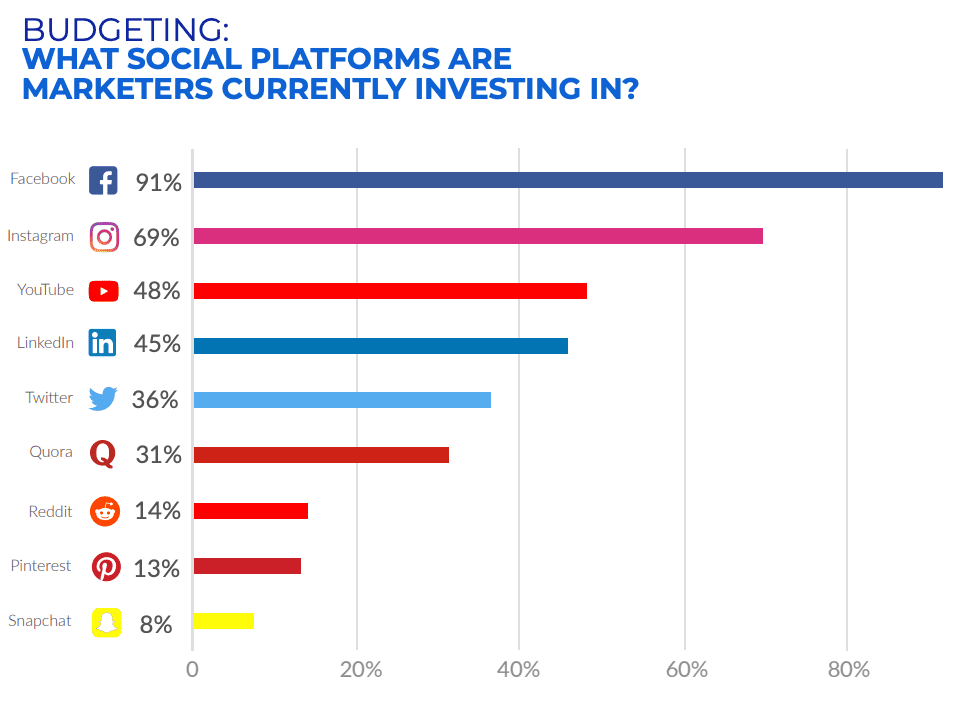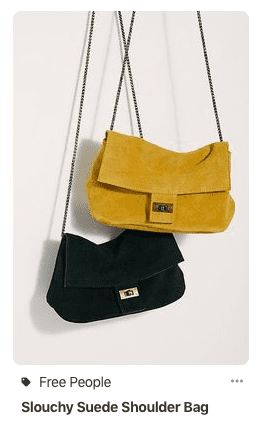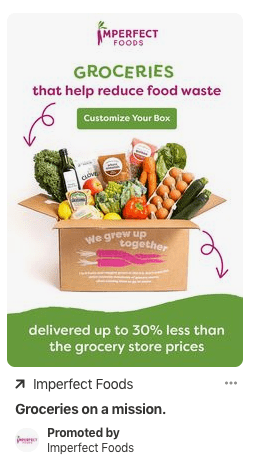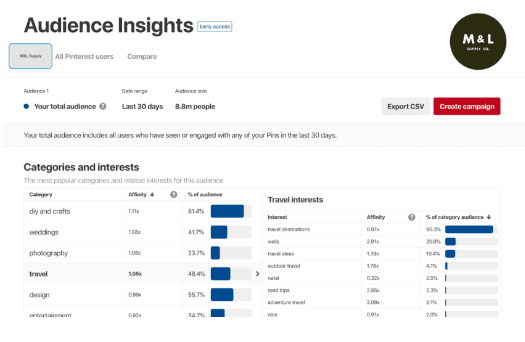Pinterest is a growing advertising platform that can boost any company’s reach and sales, especially for e-commerce brands.
This guide will walk you through setting up your Pinterest for Business account, creating Pins, and launching ads. It will also help you start to create a budding Pinterest strategy that will drive conversions and loyalty from your targeted audience.
Why Pinterest?
You may understand the Pinterest appeal from a user standpoint – but sometimes businesses have trouble realizing why Pinterest could be a big platform for them.
Pinterest is a unique social platform because it is all about intent. Users come to Pinterest prepared to take action and many use Pinterest as a shopping guide.
According to Pinterest, 83% of weekly Pinners have made a purchase based on Pins they saw from brands.
Pinterest is also an underutilized platform. Consider that there are seven million advertisers on Facebook, and yet Pinterest only has 1.5 million brands advertising to users. Additionally, according to the 2019 Hanapin Marketing State of Paid Social, only 13% of marketers are investing in Pinterest while 91% are advertising on Facebook.

Since there are fewer players, there is significantly more opportunity to get in front of people on the Pinterest platform.
Who is on Pinterest?
More than 300 million people use Pinterest every month. Ninety-eight percent of those users have tried something new they found on Pinterest and 77 percent have found a new brand or product.
Pinterest reaches 83 percent of women aged 25-54, according to Pew Research Center. If that fits your target demographic, you absolutely need to be on the platform.
However, in 2018, 50 percent of new sign-ups were men, so you may still be able to get in front of the right audience.
Additionally, users on Pinterest have more disposable income. In fact, 35% of Pinterest users make more than $75,000 per year.
Obviously Pinterest is great for any business with a strong female demographic. Further, it is suited well for any e-commerce brand. We also think it is essential for travel brands – see why.
Regardless of your industry, if you’re looking for a way to expand your reach without increasing your budget, Pinterest is a platform to consider.
Getting Started with Pinterest for Business
The first step to advertising on Pinterest is to create a free business account. You can sign up for a new account or convert your existing personal account. Once you have a business account, you can start running ads.
Next, you’ll want to set up your profile. Choose a profile photo and add other helpful information to help your potential customers get to know you better.
Then, you’ll start creating Pins. Your Pins can be saved and shared by Pinterest users organically, or you can use Ads Manager to promote your Pins and they will be served in the feeds of a targeted audience.
Creating Pins
 As a business, you’ll want to create pins regularly. Pinterest recommends creating new Pins that link to your website or other claimed accounts at least once per week. This will encourage users to engage, save and share your content. If you’re stuck on trying to figure out what to make pins for, consider showcasing:
As a business, you’ll want to create pins regularly. Pinterest recommends creating new Pins that link to your website or other claimed accounts at least once per week. This will encourage users to engage, save and share your content. If you’re stuck on trying to figure out what to make pins for, consider showcasing:
• Tutorials for your products
• New products
• New site content
To create a pin, you need 3 basic elements: a featured image or video, the copy, and the link you want users to visit when they interact with your pin.
Featured image or video
One of the most daunting things about Pinterest for businesses is how visual it is. Your visual component will be key to making your ads stand out in the platform.
You’ll want to make sure you use high-quality, compelling images and videos. Pinterest recommends using PNGs or JPEGs at a 2:3 aspect ratio, or 1000 x 1500 pixels, to avoid having them cut off. The max file size for images is 32MB.
For videos, keep in mind that most of your users will see the video with the sound off. You can add a text overlay to help convey your message. Make sure your video visual can stand alone, without the audio component.
Copy
For pins, you’ll have a title and a description. Your title can be up to 100 characters. The title is optional – if you don’t fill it out, users will see your Pin description instead.
The Pin description shows up fully once people click your Pin. If you don’t include a title, the first 50-60 characters are what will show up in users’ feeds. You can use up to 500 characters, but it is important to prioritize the most important information first to compel your audience to open the Pin or follow the link.
Even though the text may not always be shown, it is actually the most important part, as this is how Pinterest will determine when and where to share your content.
Once you’ve created a Pin, you can go back later and update the link or change the description.
Links
Like any PPC ad, you’ll want to make sure you are sending users to content they would expect to see from clicking on the Pin. If you showcase a certain clothing item in your image, you should send users to the product page for that clothing item. If you mention a sale in your video, you will want to send users to a page that also mentions the sale.
When someone clicks on a Pin, they want to learn more about it. Your landing page should feel like a natural progression from the Pinterest platform to your site.
Boards
Boards are how users organize Pins, and you will use them to organize the Pins for your business as well. Boards will also show up on your profile so users can browse your Pins and learn more about your business. You will want to make sure your boards are clearly labeled, so that users can find the content that will be most relevant to them.
Claiming
“Claiming” associates your branding with any Pin that features your content, whether you create it yourself or another user creates it. To make sure you get credit for all of your content, you’ll need to claim your website and any additional social channels.
Bring on the widgets
The two most popular Pinterest widgets are the Save button and the Follow button. Adding these to your website will allow users to save your content on their own Pinterest boards (which will also share it with their followers) and follow your content.
The Pinterest Tag
Like other advertising platforms, you’ll need to add The Pinterest Tag to your site if you want to run ads. The Pinterest Tag will help you keep track of users from Pinterest once they hit your site. You’ll be able to track whether your Pinterest activity has contributed to visits, signups, or checkouts, depending on your business and your goals.
Using Pinterest Ads Manager
 Once your Pinterest for Business account is set up, you can start using Ads Manager. You’ll use Ads Manager to create, edit and manage Pinterest campaigns. Your campaign will be a collection of Promoted Pins. If you’re a visual learner, we also have a video that can help you set up an ad campaign.
Once your Pinterest for Business account is set up, you can start using Ads Manager. You’ll use Ads Manager to create, edit and manage Pinterest campaigns. Your campaign will be a collection of Promoted Pins. If you’re a visual learner, we also have a video that can help you set up an ad campaign.
To access Ads Manager, visit ads.pinterest.com.
Create a new ad
To start, you’ll click “Ads” and then “Create ad” in the Ads Manager interface. We recommend always pausing your campaign as your build it. This keeps your campaign in “draft” mode until you are ready to go live. After starting the creation process, you’ll set a campaign goal.
Campaign goals
Your campaign goals include building brand awareness, driving consideration, or growing sales. Inside each of these 3 categories, you can set a more specific objective. For example, if you want to use these ads to build brand awareness, you might select video views as your specific objective. If you are focused on sales, you may select conversions as your objective.
A couple of newer campaign goals include App installs, if your business has an app, or Shopping catalogues. Shopping catalogs work a bit like Facebook’s Dynamic Ads. You connect a product catalog and promote product groups to relevant users.
Build an Ad Group
Next, you’ll create an Ad Group. This Ad Group will be a container for all of your promoted Pins. You will set your budget, running dates, and audience targeting on the Ad Group level.
Specify Your Target Audience
Pinterest has fairly robust options for finding your intended audience on the platform. You can use the targeting options individually or combine multiple approaches together for a more specific audience.
Audiences
Through audiences, you can reach people who have bought from your site already, people who have visited your site, or who recently engaged with your Pinterest content. These audiences are pulled from the Pinterest Tag, so you’ll want to make sure that is set up and working properly if you wish to use this type of targeting.
Demographics
Pinterest demographic data is slightly more limited than other platforms. You can choose to focus on specific locations, languages, devices, or genders.
Keywords
Like on search engines, you can target your ads to users who are searching for specific topics. If you are a clothing brand, you might target users who are searching for “fashion.”
One thing to note is that Pinterest keywords work a little differently than Google’s. It isn’t recommended that you keep super tight keyword groups on this platform. Covering all of your bases can lead to more placements, more visibility, and more sales.
Interests
Targeting your audience through their interests means reaching people based on the types of boards they’ve created or the types of Pins they have interacted with. For example, a travel company could target users who have created “dream vacation” boards. There are a wide range of interests to choose from.
Expanded
For expanded audiences, once you start layering in keywords and interests, Pinterest will suggest additional interests and keywords based on the content of your ad and who you’re trying to reach.
Placements
You’ll also get to choose when and where your ads show up. You can opt for your ads to show in browsing feeds or in search results, or both.
Set the budget and schedule
After you’ve selected your objective and audience, you’ll want to select dates for your campaign to run. You can choose an end date or to run your campaigns continuously. Even if you do not select an end date, you can turn off your campaigns at any point.
Next, you’ll set a budget. If you have a total budget in mind, set a lifetime budget. Pinterest will use this budget evenly over the specific dates you’ve selected, or if you did not set an end date, it will run the campaign until the budget runs out. You can also select daily if you have an amount in mind that you’d prefer to spend each day.
Lastly, you can set a maximum bid. This is the most you’d be willing to pay for a click or an engagement on Pinterest. Pinterest will give you a recommended bid depending on your target audience and how others are bidding in the space.
Choose Pins to promote
Once you’ve set your budget and schedule, you will select Pins to promote based on the ones you have already created. You can also create new Pins at this point. You can choose to promote pins that are already doing well, or use new Pins that align more with the campaign’s goals. You’ll also be able to edit the Pin name and URL of existing Pins to make sure they align with the campaign.
Wait for review
After you finish setting up your campaign, your ads will enter a review period. Your ads will be checked to make sure they follow the ad policies on Pinterest. If your ad does not get approved, you’ll have the opportunity to edit it and resubmit it.
Why wasn’t my Pinterest ad approved?
The most common reasons ads are rejected are because they create a false sense of urgency, use excessive symbology or hashtags, do not include content on the landing page, have a broken link, or use images or descriptions that include shocking content or profanity.
You also can’t use link shorteners in the destination URL or description, and you can’t use third-party videos, images, or gifs.
Building a Pinterest Strategy
Once you’ve set up your account and are comfortable with the available tools, you’ll want to start focusing on your strategy.
Pinterest prioritizes high-quality content. The better your pins are, the more likely Pinterest is to show them to users.
Focus on your audience
Recall that Pinterest is such a good platform for your business because of audience intent. Put yourself in your customer’s shoes. What kind of ideas might your target be searching for? How can you help them make a decision? These questions should drive your content choices.
Scheduling
Because Pinterest prioritizes new content from frequent posters, you’ll want to make scheduling Pins a component of your strategy.
Pinterest allows you to schedule Pins up to two weeks in advance through their platform. Pinterest recommends adding new Pins over time rather than uploading a bunch at once.
Hashtags
Also consider using hashtags where appropriate. Thoughtfully used hashtags will help improve your search results. Unlike hashtags on other social channels, hashtags on Pinterest are not used for jokes, memes or commentary.
If you aren’t sure which hashtags to use, do a search for your topic on Pinterest and see what others are using. Pinterest will also offer autocomplete suggestions as you write your description and title.
Analytical tools
Pinterest has robust analytical tools that are built into the business platform to help you achieve success.
Insights
Pinterest shares new seasonal, category, and audience insights on a regular basis. These are insights drawn from Pinterest overall, but can help you shape your business’s strategy.
For example, Pinterest recommends sharing seasonal content about 30-45 days before you would on other social channels. This is because users generally begin planning for seasonal events on Pinterest before they would on other platforms.
Pinterest Analytics
Pinterest Analytics will deliver insights on your particular Pinterest audience, as well as how your specific Pins are performing.

Buyable Pins
A newer feature for Pinterest is the option to include Buyable Pins. With these, users can purchase a product without ever leaving the Pinterest platform. These are especially useful for clothing retailers, but if your business could benefit from this approach too, it may be worth testing.
Co-Promotion or partnerships
One way to get your content in front of a new audience is to develop a co-promotion or partnership strategy with another brand. This would involve you pinning some of their content to your boards, and vice versa.
Strategy don’ts
Once advertisers figure out how a platform works, they inevitably try to think of ways to get ahead. However, these are 3 common strategies we have seen businesses try to use that end up being a waste of time, and may also get a business account shut down.
Keyword stuffing
Just like on other PPC platforms, keyword-stuffing your description is a no-no. Pinterest will ding your content, or remove it, if it seems like you are just randomly using popular search terms in your description. Pinterest values content that is useful – so make sure your content is helpful, descriptive, and beautiful.
Adding hashtags to old Pins
You can go back and add hashtags to old Pins, but it won’t help them show up higher in search results. Pinterest prioritizes showing new content, so it isn’t recommended to waste your time on this.
Re-pinning the same content
While there may be circumstances where this strategy makes sense, in general, this practice is discouraged. Pinning the same Pin multiple times can be flagged as spam.
Recap
We hope this guide has made starting Pinterest Ads seem less daunting. Because Pinterest is underutilized, it may be worth testing, even if you don’t expect huge results.
Once you start creating Pins, make sure you schedule content regularly. You’ll also want to include hashtags to get your content in front of the right people. Then, use Pinterest’s analytical tools to optimize your content. To increase your sales and reach, you may also consider trying Buyable Pins or co-promotion strategies.
As always, be sure to check PPC Hero for Pinterest updates from Hanapin Marketing’s PPC experts.


